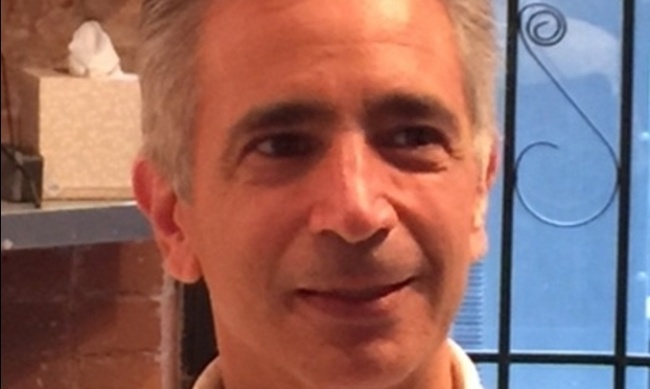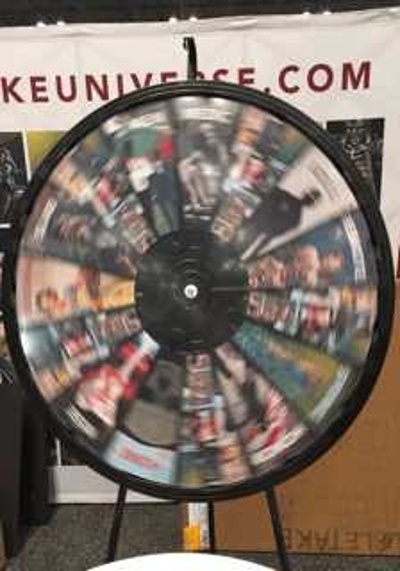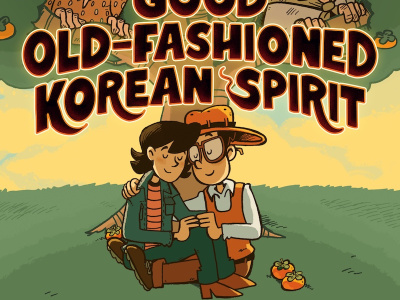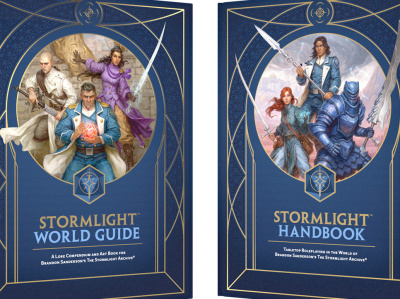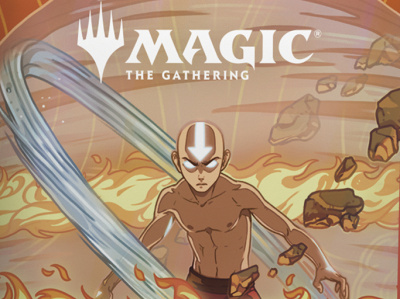In his career, Bill Jemas has had some very interesting business cards.
Jemas started his professional life as a tax lawyer at Wall Street juggernaut Simpson Thacher & Bartlett. He later went on to work for the NBA, where he ended up as president of business affairs. He switched full-time into consumer products, where he became the president of trading card manufacturer Fleer/SkyBox. Jemas then bounced back to basketball, where he became vice president of sports and entertainment for Madison Square Garden.
Readers of ICV2 will surely know Jemas best from his tenure as CEO and publisher of Marvel Comics from 1999 to 2003. In his time there, Jemas helped steer the company out of bankruptcy with innovations such as Marvel’s “Ultimate” line, all the while running a two-man carnival barker show with the man he brought in as editor in chief, Joe Quesada.
And Jemas is now back in the comics game, heading up Double Take Comics, the new publishing imprint backed by video game publisher Take Two Interactive. The company started publishing in 2015, with 10 titles all set in the universe established by George Romero’s Night of the Living Dead.
Jemas has been around the block many times and certainly uses his Marvel experience as a frequent touchstone. He chose to reflect on three things done right and wrong in the launch of Double Take.
THE GOOD
Find True Storytellers
Jemas and Double Take took a roundabout path to finding writers for their titles. They tapped storytellers from The Moth, the hyper-popular National Public Radio show and podcast, to helm their books.
“What we were looking for initially was, for want of a better term, a ‘soundtrack’ for the comic,” Jemas says. “It’s endemic to pretty much all scriptwriting that writers kind of look at what the art is and describe the action, or the characters describe their backstory, or talk about things that are going to happen.”
But Jemas was looking for something more, and something different.
“We started incorporating real, true stories told by Moth storytellers into our comic books. And then the characters stopped talking about what was on the page, but rather what was in their lives,” he says.
The process gets a bit involved, but Jemas thinks it’s worth it.
“We really wanted to emphasize interesting, informative and funny, and the Moth guys were perfect for that,” he says. “These are verbal thinkers. We try not to bug them too much with the visuals. We basically let the storyboard artists block out the action with the visuals, choose the camera angles and POVs. And we let the Moth guys and our in-house editors work on the dialogue.”
Jemas says the audience has responded.
“Bringing in true stories brought in this wonderful dimension that readers really liked.”
Pack and Re-Pack
Jemas admits this one is a happy accident, but you take good fortune where you can find it.“We had 10 books that all finished at the same time. So we figured, hey, let’s pack this into a super-pack, put a sleeve on the outside, shrinkwrap it, and a retailer can put out our stuff in one slot. Because, come on, who’s going to give 10 front-facing cover-out slots to a new publisher? They can just take one slot and have something for all 10 of our books.”
The first Super Pack was value-priced at $20.00 for 10 #1 issues. And to Jemas’ mind, it clicked.
“It created this really fun binge-reading phenomenon,” he says. “The people who really liked our books binge-read through all 10, much like you’d watch 10 episodes of something on Netflix.”
Double Take has continued the theme with $20.00 Super Packs for #2-#5 issues as well.
Embrace Technology
People spend more time on their phones, and less time curled up with a good book. Jemas is trying to hit both worlds.
“Comics are great on the page, but comics just don’t look good as pdfs online,” Jemas says. “Part of it is, neurologically, if you’re going to be immersed in a story, you can’t activate your motor cortex. If you’re trying to scroll through a pdf, your brain just doesn’t want to immerse. It’s an ultimately unsatisfying experience.”
Jemas’ twist is what he calls a “storyboard player.”
“We design our books to be read one panel at a time on your phone,” he says, “and happy accident there, as you’re scrolling through the story, the characters really spring to life. I was not expecting that to happen, and I don’t think the artists were either, but we kind of found the tradecraft of how to do that.”
THE BAD
Know Your Scale
Jemas now knows: Hitting a note at Marvel was easy. Hitting the same note at a start-up is much tougher.
“There were certain things to do that were just easy from a business point-of-view at Marvel,” he says. “We were going to tell the origin of Wolverine, we were going to dump the McCarthy-ist Comics Code, we weren’t going to have comics for teens that showed people smoking, and so on. And we would just do those things, which I would announce in my filter-free way, and Joe Quesada would come along and pour some gasoline on the fire, and before you knew it, things became huge sellers. And they became big because of the buzz, the chatter, people fighting over them, the quote-unquote ‘controversy’ around them.”
Jemas thought the ’port of the same plan would be easy at Double Take. It wasn’t.
“I was hoping-expecting-thinking when I came to the independent company that I could keep surfing off that wave of comic book chatter, but I found that… fewer people cared when you were a smaller, independent company,” he laughs. “And the places that people gather to talk about comics had changed drastically. The big comics websites used to have message boards with thousands of responses, and that’s all gone. Now it’s very, very dispersed.”
And cue this refrain: Traditional media to social media is a big leap to make for people who were brought up in the former, but not the latter.
“I didn’t know how to use social media in the same effective way we had used a mass media when I was at Marvel,” Jemas admits. “And that’s a failing of my lack of tradecraft in modern marketing. We spent way, way too much money on traditional advertising. Not to swell your head, but money spent on ICV2 was well-spent. But image-building advertising online gave us, by and large, close to zero impact.”
At the Double Take scale, Jemas is a believer in business trade marketing “We have a couple hundred retailers who take pretty much everything we do, and they do it in volume and they hand-sell it with great results,” he says. “Our scale tells us this is where we can concentrate efforts to get results.”
Put It in Their Hands
Jemas has not forgotten the end of the equation, either: that final, end-line consumer.
“We need to market to readers, too,” he says. “We should have just done more sampling. We found that not everyone, but about 75% of people who have tried our comics, really like them. So we should have done more with physical sampling at shows, with comic shops, on the street, or anywhere. We should have done more ground-level, face-to-face, here’s-your-free-comic.”
Jemas believes this is a page he can take from his old Marvel playbook.
“The most important thing, but the most overlooked thing, that we did during my tenure at Marvel, was sampling. Lots of free comics at Walmart, at KB Toys, Payless Shoes, in the theaters with the X-Men movie, you name it. Handing out good, free comics is a great way to get people to read, and I just didn’t do enough of that early on here.”
License!
There’s one other tried-and-true idea Jemas wishes he would have hit right out of the gate at Double Take.
“We should have done what everyone else in the small publisher tree did, which is sign up a big ol’ license,” he says. “And it’s ironic, because most people reading this will know me as a comic book guy, but I spent most of my life actually doing merchandising and licensing. I should have taken the advice I’ve given to every t-shirt company ever: You can try to compete on quality, but it’s the image on the shirt that matters. It’s the image, not the threadcount.”
Jemas will now rectify that mistake as Double Take enters a Phase Two.
“We just have to find a good license,” he says. “There’s a lot out there that’s a little off the beaten trail that has a good-sized audience that can drive a larger circ. I’d love to do an ‘Ultimate’ version with a classic entertainment property that can use a little new life breathed into it.”
AND WHAT ELSE?
“There was a big brouhaha at Marvel when I came to Fleer and I wanted to do Fleer Ultra X-Men cards, and all the guys I worked with at Marvel who had been stuffed into lockers in high school by sports kids said, ‘No! That’s a sports brand! We’re way anti-sports!’ But there’s an overlap and it’s way more than it looks like. And with every year as comic books get more and more cool, the overlap is now more apparent. By now, the similarities between sports and comics are readily apparent.”
“In both [sports and comics] markets, there’s a core market that must be obeyed most of the time, and ignored when it really matters. And there’s the understanding that you have to build a winning team and keep on winning. Those principles, I think, have always lined up pretty closely.”
“The nuance is giving them what they need, and not what they want. When I got to Marvel in December 1999, the place was a mess and comics were coughing up blood. So I kind of walked the halls at Marvel and listened, went to as many retailers as I could to ask them questions, and talked to all our licensees who would talk to me. And everyone, to the last person, said they needed teens. It was teen fans coming into stores, teens driving merchandise, and Marvel has lost teen readership. Nobody wanted me to turn Spider-Man and the X-Men back into teenagers [with the Marvel Ultimate line], but it’s what we needed. That core market was obeyed. It didn’t ask for it in word, but if you listened, it needed it.”
“And when I said I was going to turn Spider-Man and the X-Men back into teenagers, you could hear panties bunching up all over the country. But it was what we needed. There’s that tipping point where you have to understand that there’s a broader interest than just the interest of that core person who’s guarding the gate and wants to preserve things the way they are.”
“I think it’s enlightened to understand that the past gets a vote, but not a veto. The core likes the past, but the future is about youth, and youth must be served.”
“The NBA, I guess, pretty much copied what Pete Rozelle had done at the NFL, and interestingly, what Disney had done with its properties. In a nutshell, that’s ‘Everyone works on the same thing, at the same time, on the same style guide.’ So in that, you build uniform strength for your brand.”
“The business principles in sports and comics taste very, very similar to me. You just have to be aware of the differences in the demo. But to me, there are more differences between a DC fan and a Marvel fan than between a Marvel fan and an NBA fan.”
“I believe in mistakes. You’ve probably heard me say a million times, ‘Marvel threw 5000 characters at a wall, and Spider-Man stuck.’ But I don’t think any of those characters were mistakes at all. I think part of the process is trying a lot of different things. I think when something doesn’t work out, it’s not so much a mistake as it’s part of the price you pay for doing the kind of work we do.”
“I’m not complaining about our launch. I just think it could have been better. If you look at the books, look at the reviews, look at the stores that really ‘get’ us and the results they’re getting, it’s good. And it’s replicable.”
“I don’t worry about trying and failing. I think the only mistake is not trying.”
“We’ve set up this zombie world where people got exactly what they expected: These creatures will kill you if you don’t kill them first. That says that there’s pure evil out in the world, but I don’t believe in that in any way, shape or form. So step two in that is that you’ll find the twist, how these zombies are just like you, maybe better than you, in many ways.”
“The next five books are really fun, sexy, bright, superhero books. That’s what I like doing. I always thought at Marvel that if we read the newspaper and then did superhero stories that were analogous to newspaper stories, we were on the right path.”



